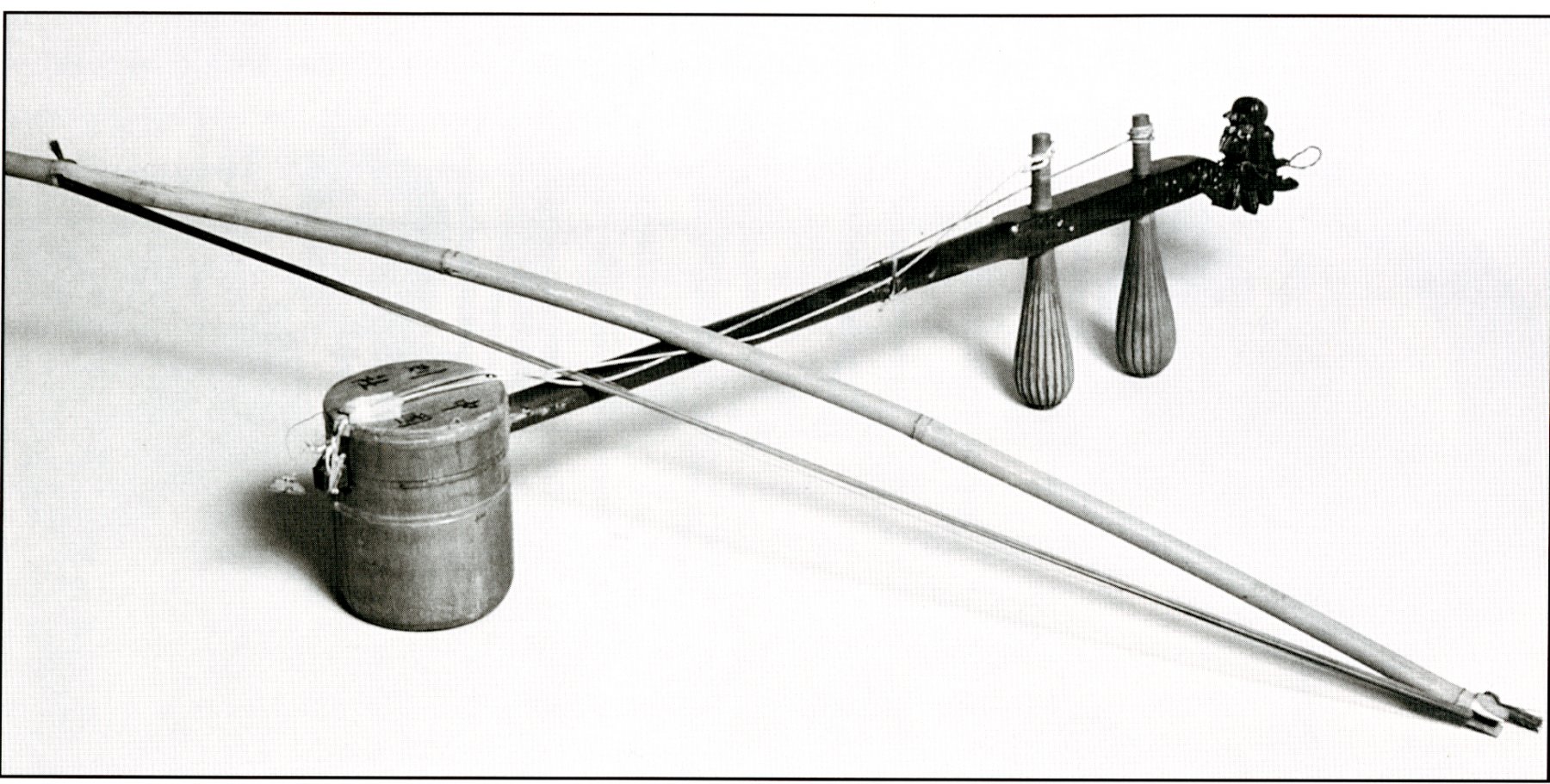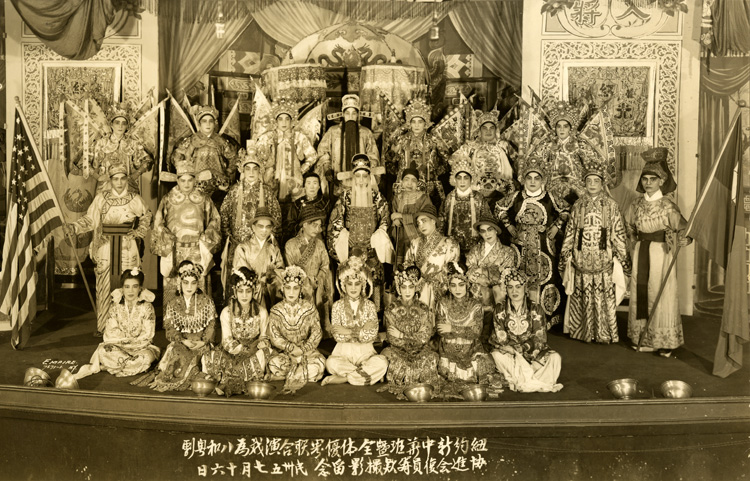The erxian – literally “two strings” – is a Chinese bowed string instrument used primarily in Cantonese music. It has two strings running along a hardwood neck which are traditionally bowed with a hard bow made of thick bamboo. Some erxian are topped with ornately carved dragon heads. After the development of the lighter, more approachable gaohu in the 1920s, the erxian became less popular and has since been played almost exclusively in Cantonese operas, where it usually accompanies singing. While still a staple instrument of Cantonese opera ensembles, modern erxian players have adapted the instrument with steel strings and lighter erhu bows instead of using the traditional heavy silk strings and unwieldy hardwood bows. MOCA’s Chinese Musical Theatrical Association (CMTA) Collection includes a number of rare musical instruments such as this one, among other costumes, photographs, props, and related documents.
Collections馆藏Collections馆藏Collections馆藏Collections馆藏Collections馆藏Collections馆藏Collections馆藏Collections馆藏Collections馆藏Collections馆藏Collections馆藏Collections馆藏Collections馆藏Collections馆藏Collections馆藏Collections馆藏Collections馆藏Collections馆藏Collections馆藏Collections馆藏Collections馆藏Collections馆藏Collections馆藏Collections馆藏Collections馆藏Collections馆藏Collections馆藏Collections馆藏Collections馆藏Collections馆藏Collections馆藏Collections馆藏Collections馆藏Collections馆藏Collections馆藏Collections馆藏Collections馆藏Collections馆藏Collections馆藏Collections馆藏Collections馆藏Collections馆藏Collections馆藏Collections馆藏Collections馆藏Collections馆藏Collections馆藏Collections馆藏Collections馆藏Collections馆藏Collections馆藏Collections馆藏Collections馆藏Collections馆藏Collections馆藏Collections馆藏Collections馆藏Collections馆藏Collections馆藏Collections馆藏Collections馆藏Collections馆藏Collections馆藏Collections馆藏
CMTA: Erxian

07 May 2019 Posted.
Erxian with dragon head and Chinese characters on sound box. MOCA CMTA Collection.
龙头及琴筒上有中文字的二弦,美国华人博物馆(MOCA)中国音乐剧社(CMTA)馆藏

